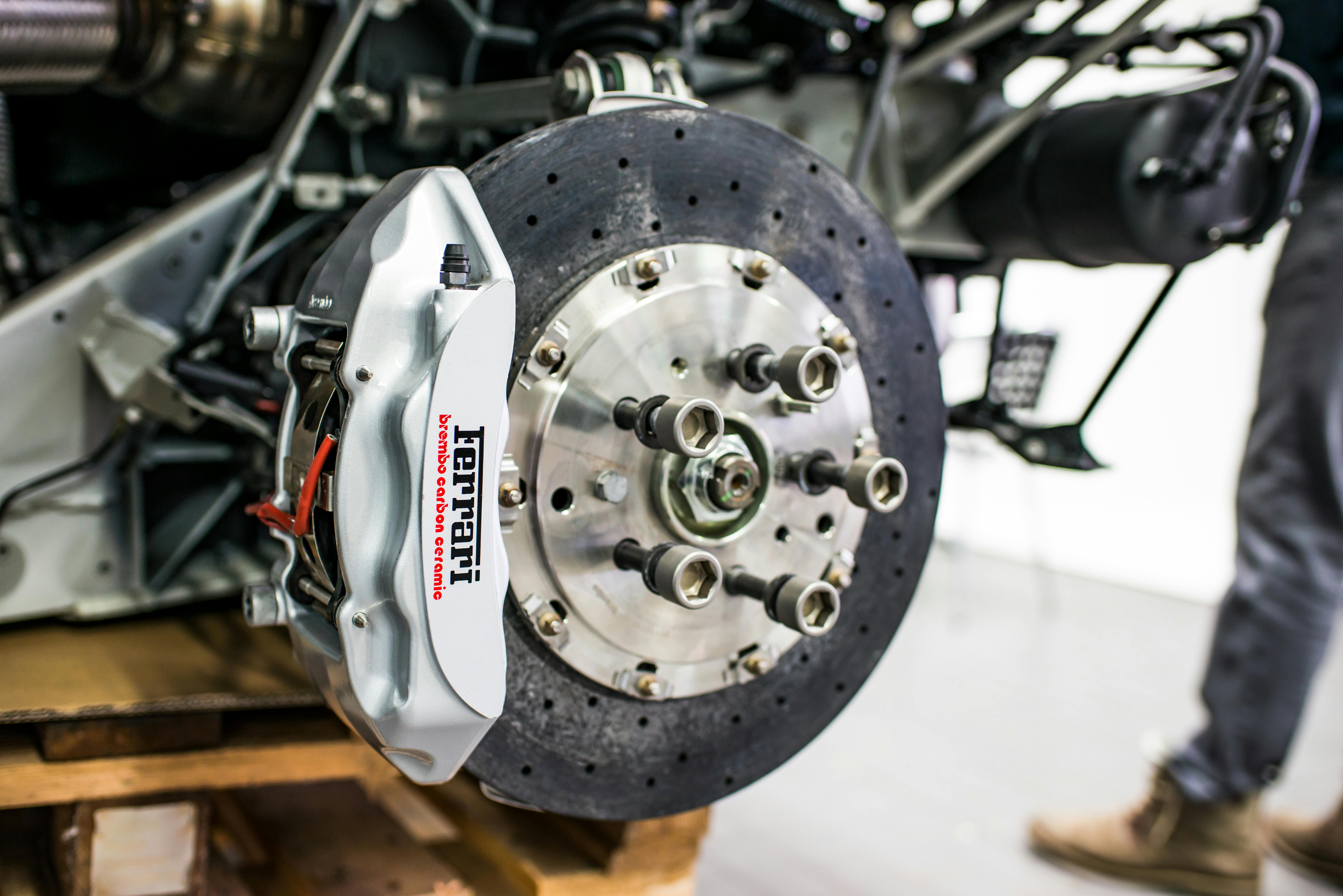Decoding the Mystery of Carbon Fiber Wheels
Picture this: You're at a high-performance track day, eyeing the sleek machines lined up in the pit lane. Among the sea of gleaming metal and rubber, something catches your eye - a set of wheels that seem impossibly light, with a distinctive woven pattern. Welcome to the world of carbon fiber wheels, a cutting-edge technology that's reshaping the automotive landscape one revolution at a time.

The Genesis of Carbon Fiber in Automotive Applications
The story of carbon fiber in the automotive world is one of innovation and perseverance. Initially developed for aerospace applications in the 1960s, carbon fiber’s journey to the automotive sector was gradual but revolutionary. Its high strength-to-weight ratio made it an attractive material for race car constructors looking to shave crucial seconds off lap times.
Early adopters in Formula 1 and other motorsports began experimenting with carbon fiber components in the 1970s and 1980s. However, it wasn’t until the turn of the millennium that carbon fiber wheels started to gain serious traction. The challenge lay not just in creating a wheel strong enough to withstand the forces of driving but also in developing manufacturing processes that could produce them consistently and (somewhat) affordably.
The Science Behind the Strength
What makes carbon fiber wheels so special? It all comes down to their unique material properties. Carbon fiber is composed of thin, strong crystalline filaments of carbon, woven together and set in a resin matrix. This structure results in a material that is incredibly strong yet remarkably lightweight – often up to 40% lighter than equivalent aluminum wheels.
The benefits of this weight reduction are multifaceted. Reduced unsprung mass leads to improved handling, acceleration, and braking performance. Moreover, the stiffness of carbon fiber allows for more precise wheel designs, optimizing factors like aerodynamics and brake cooling. The material’s natural damping properties also contribute to a smoother ride, reducing vibrations and road noise.
Manufacturing Marvels: Crafting Carbon Fiber Wheels
The process of manufacturing carbon fiber wheels is a blend of high-tech engineering and artisanal craftsmanship. Unlike traditional metal wheels, which are typically cast or forged, carbon fiber wheels are built up layer by layer. This process, known as layup, involves carefully placing sheets of carbon fiber prepreg (pre-impregnated with resin) into molds.
The layup process is crucial, as the orientation of the carbon fibers determines the wheel’s strength and performance characteristics. Once the layup is complete, the wheels are cured in autoclaves under high pressure and temperature, allowing the resin to set and create a solid, unified structure. After curing, the wheels undergo extensive machining and finishing processes to achieve their final form.
Quality control is paramount in carbon fiber wheel production. Each wheel undergoes rigorous testing, including CT scans to check for internal defects, fatigue testing to ensure longevity, and impact testing to verify safety standards. This meticulous process contributes to the high cost of carbon fiber wheels but also ensures their exceptional performance and reliability.
Performance on the Edge: Racing and High-Performance Applications
In the world of motorsports, where fractions of a second can mean the difference between victory and defeat, carbon fiber wheels have found their most fervent adoption. Formula 1, WRC, and endurance racing series have all embraced this technology, reaping the benefits of reduced rotational inertia and improved suspension response.
But the advantages extend beyond just lap times. The reduced weight of carbon fiber wheels allows race engineers to fine-tune weight distribution more precisely, optimizing overall vehicle balance. The wheels’ stiffness also provides more consistent performance under the extreme conditions of racing, maintaining their shape and characteristics even under high cornering and braking forces.
From Track to Street: The Growing Adoption in Production Vehicles
While carbon fiber wheels were once the exclusive domain of race cars and hypercars, recent years have seen a gradual trickle-down to more accessible performance vehicles. Several high-end sports car manufacturers now offer carbon fiber wheels as options, touting benefits like improved acceleration, handling, and fuel efficiency.
The automotive industry’s push towards electrification has also accelerated interest in carbon fiber wheels. For electric vehicles, where range is paramount, the weight savings offered by these wheels can translate into meaningful improvements in efficiency and performance. As production scales up and manufacturing processes become more refined, we’re likely to see carbon fiber wheels become increasingly common in a wider range of vehicles.
Challenges and Future Prospects
Despite their numerous advantages, carbon fiber wheels face several challenges in widespread adoption. Cost remains a significant barrier, with a set of carbon fiber wheels often costing several times more than their aluminum counterparts. There are also concerns about repairability and long-term durability, particularly in everyday driving conditions.
However, ongoing research and development are addressing these issues. Advances in manufacturing techniques, such as automated layup processes and out-of-autoclave curing, promise to reduce production costs. Meanwhile, hybrid designs combining carbon fiber with metal components are being explored to enhance durability and repairability.
The future of carbon fiber wheels looks bright, with potential applications extending beyond traditional automobiles. The technology is being considered for use in commercial vehicles, where weight savings can lead to significant fuel economy improvements. Additionally, the aerospace industry is showing renewed interest in carbon fiber wheels for aircraft, potentially revolutionizing landing gear design.
As we look to the horizon of automotive technology, carbon fiber wheels stand out as a shining example of how materials science can drive performance and efficiency. From the blistering speeds of Formula 1 to the daily commute, these advanced components are quietly revolutionizing the way we interact with the road. The journey of carbon fiber wheels from exotic racing technology to mainstream automotive component is a testament to the power of innovation in pushing the boundaries of what’s possible in automotive engineering.





